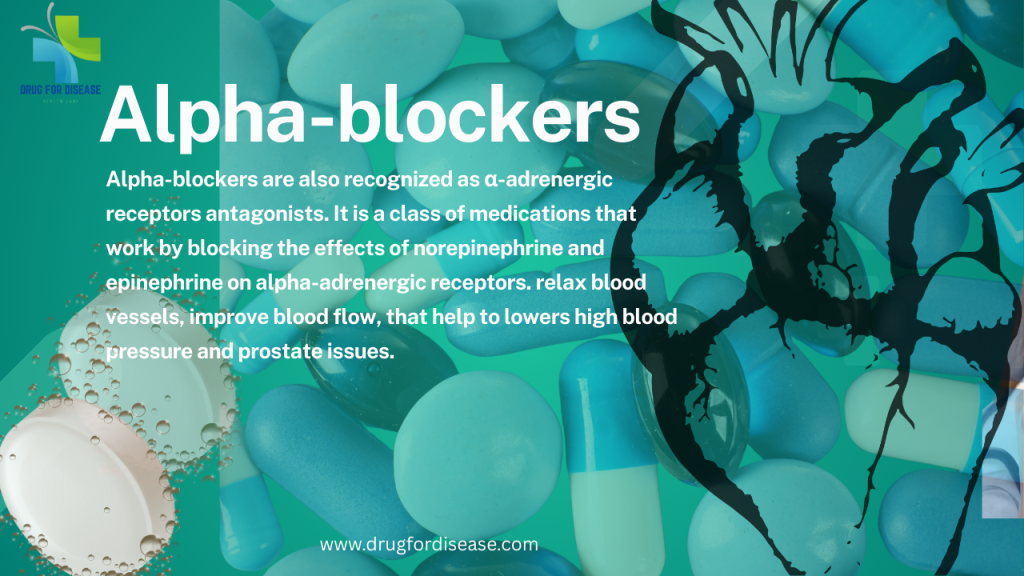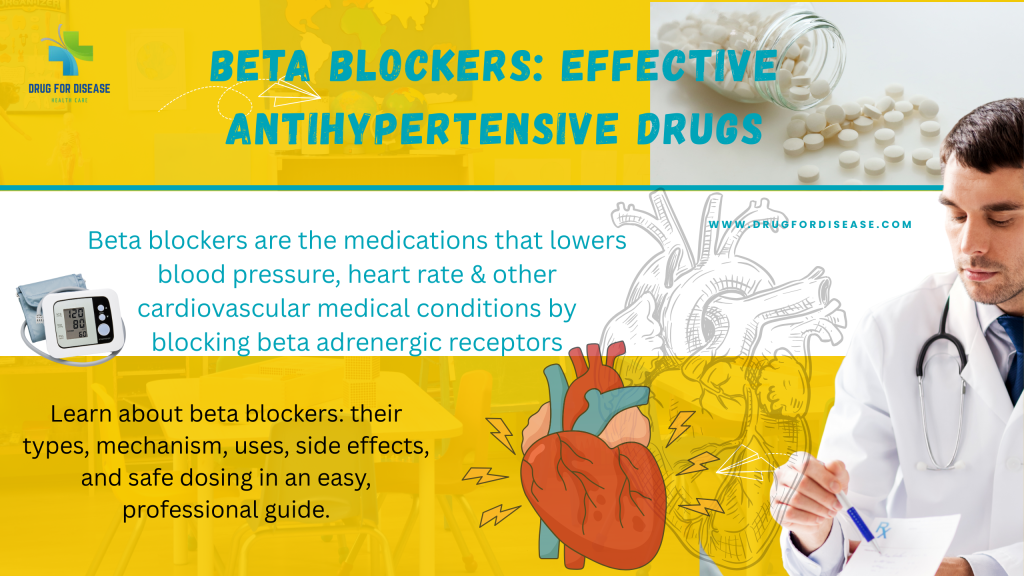Amlodipine besylate is a common calcium channel blocker (CCB) that is mostly used to treat high blood pressure and chronic stable angina (chest discomfort). It is a calcium antagonist and belongs to the dihydropyridine class, which means it relaxes blood vessels and makes blood flow better.
It was approved for medical use in 1990 and included in the essential medicine list of WHO. According to a report of 2022, it was the fifth most commonly prescribed medication for hypertension in the United States of America. Amlodipine is a good choice for treating high blood pressure because it has a lengthy half-life of 30 to 50 hours and only needs to be taken once a day.
The bioavailability of amlodipine besylate is 64% to 90% & plasma concentrations is achieved in 6 to 12 hours. Amlodipine is metabolized by the liver to inactive metabolites and excreted by kidneys.
Mechanism of action of Amlodipine involves a number of important steps
Being peripheral arterial vasodilator, it stops calcium from getting into smooth muscle in arteries, causes vasodilation, which lowers systemic vascular resistance and blood pressure.
By stopping calcium from getting into cells, amlodipine opens up coronary arteries, which makes it easier for the heart to get oxygen, especially in people with vasospastic angina.
It binds to the alpha1 subunit of L-type calcium channels, prevent its opening. It reduces the entry of calcium ions and modifies the contractility of the heart and smooth muscle. All of these mechanisms work together to make amlodipine effective for treating high blood pressure and angina.
What Amlodipine besylate is used for
High blood pressure (hypertension)
Reduces peripheral vascular resistance by relaxing the smooth muscle in the arteries, which lowers blood pressure.
By opening up the coronary arteries, it increases blood flow to the heart and lowers the number of angina episodes.
Chronic stable angina (due to physical or emotional stress)
Vasospastic angina
Often used as a first-line treatment, either by itself or with additional antihypertensive medications.
Helps to stop spasms in the coronary arteries that cause chest discomfort.
A new study suggests that amlodipine, can help to manage ADHD symptoms as it significantly reduced hyperactivity when used on rats and zebrafish.
Dose & dosage form of Amlodipine besylate
It is available in oral dosage form i.e. Tablets of 2.5mg, 5 mg and 10 mg.
In adults: Initially, a dose of 5 mg/day is recommended once a day & should not exceed 10 mg/day.
In children and adolescents (6 to 17 years of age), the initial dose of 2.5 mg once a day is the recommended dose.
Children under six years initial dose is 0.05-0.1 mg/kg/day & can be raised a maximum dose of 0.6 mg/kg/day after a week.
People over 65 or with liver problems may start with 2.5 mg/day.
For angina patients, first dose is 5 mg once a day. The maintenance dose will be 5 to 10 mg once a day, with a maximum dose of not more than 10 mg per day.
Amlodipine besylate can be taken with or without food, but better to take at same time to get best results.
It should be taken with a glass of water.
Warnings and Things to Avoid
Amlodipine besylate is usually well-tolerated, however there are several things you should do to be safe
Hypotension (low blood pressure) can cause blood pressure to drop too much, especially in patients who are low on volume.
Severe Aortic Stenosis: Be careful when using it because it can lower blood flow to the heart.
Liver damage: You may need to change the dose since your metabolism is slower.
Heart Failure: Be careful when giving Calcium channel blockers to those with heart failure, as they may make symptoms worse in some circumstances.
Pregnancy (Category C): Only use if the benefits are greater than the hazards.
Breastfeeding: A little quantity of the drug comes out in breast milk. Talk to your doctor before using it.
Keep all medication out of sight and reach of children as many containers are not child-resistant. and away from light, excess heat and moisture Always lock safety caps. Place the medication in a safe location – one that is up and away and out of their sight and reach. Dispose of unneeded medications
side effects of Amlodipine besylate
Most side effects are mild to moderate, but some may need medical help
Common side effects of amlodipine besylate include peripheral oedema (which is swelling in the ankles and feet) migraines, hypotension etc
Some adverse effects are related to dose like dizziness, weakness, palpitations, and hot flushes.
Rare effects include jaundice, pancreatitis, hepatitis or cholestasis and high levels of transaminases.
Allergic reactions, erythema, pruritus associated with amlodipine that disappear with the discontinuation of treatment.
Chest discomfort that gets worse (not often, but can happen in angina patients)
Amlodipine-associated gingival overgrowth.
symptoms of overdose may include dizziness, tachycardia, fainting & severe low blood pressure. It can be treated with fluid replacement and maintaining glucose levels. Need to monitor patient s vital signs, respiratory system function, blood glucose levels, renal function and urine output.
Interactions between drugs
Amlodipine besylate can change how other drugs work, when taken together:
Amlodipine may raise the levels of simvastatin (don’t take more than 20 mg/day of simvastatin).
Strong CYP3A4 inhibitors, such ketoconazole, itraconazole, and clarithromycin, are: Increase the amount of amlodipine in your body, which raises the chance of negative effects.
Other antihypertensives, like beta-blockers, ACE inhibitors, and diuretics, may make the blood pressure-lowering effects stronger, which raises the risk of low blood pressure.
Grapefruit juice may help the body absorb amlodipine better, which can raise blood levels.
If you are taking other medicines either prescribed or over the counter, inform your doctor and pharmacist. Dose of amlodipine may need to change, or careful monitoring may be required.
You must inform your healthcare professional if you ever had heart or liver disease.
Amlodipine besylate is a good and often given medicine for high blood pressure and angina. It just needs to be taken once a day and is well tolerated. A study in 2023 revealed that amlodipine can significantly manage Blood pressure in different ethnic groups, adults, old people, diabetic patients, and patients having chronic kidney disease without disturbing glycemic and kidney function. Patients should still be watched for swelling, low blood pressure, and other drug interactions. Always talk to a doctor before starting or changing the dose, especially if you are taking other medicines or have liver or heart problems.







